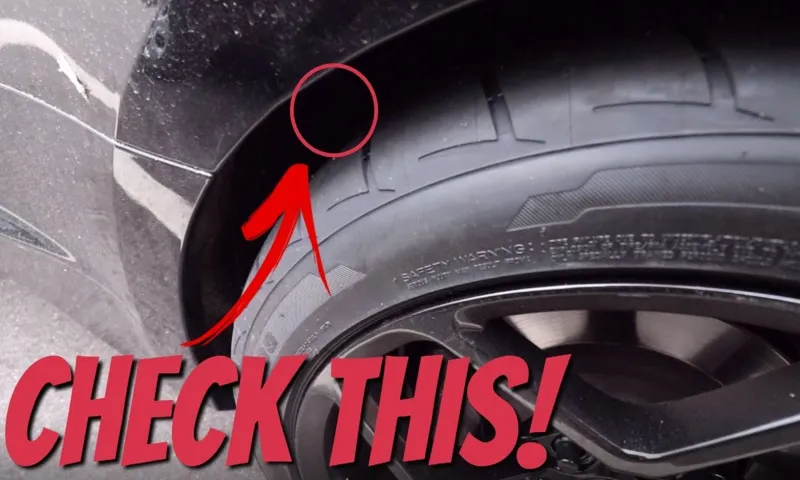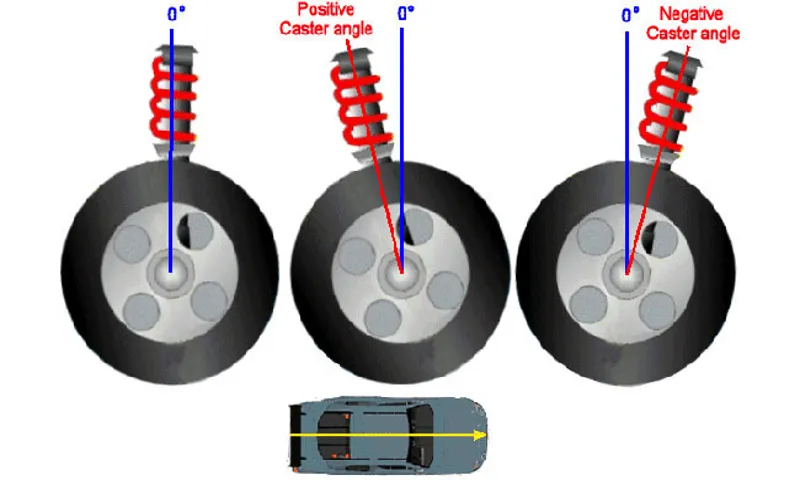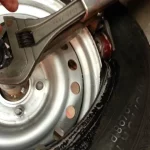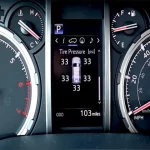Tire rubbing can be quite annoying, particularly when you’re trying to turn your vehicle. No one wants to hear that grating sound, and it can also lead to some serious damage if you don’t address it. Tire rubbing is usually caused by a few different things, and figuring out the root cause can help you fix the problem and avoid any future issues.
So, if you’re wondering why your tires are rubbing when turning, keep reading! We’ve got some common causes that you should be aware of.
Table of Contents
Improper Wheel Alignment
If you’re experiencing tire rubbing when turning your vehicle, it’s likely that your wheels aren’t properly aligned. Wheel alignment is an essential aspect of vehicle maintenance that ensures your tires are angled correctly and moving in the same direction as your car. When your alignment is off, it can cause your tires to drag or create friction against other parts of the car, resulting in the rubbing sensation you’re feeling.
Improper alignment can occur due to a variety of reasons, such as hitting a curb or pothole, worn-out suspension components, or incorrect installation of aftermarket parts. It’s essential to have your alignment checked regularly and corrected as soon as you notice any issues to prevent further damage to your vehicle and ensure your safety on the road.
The Importance of Wheel Alignment
Wheel alignment is a crucial aspect of vehicle maintenance that is often overlooked by most drivers. Improper wheel alignment can lead to various problems including decreased gas mileage, uneven tire wear, and ultimately, a shorter lifespan for your tires. But what causes improper wheel alignment? Factors such as potholes, uneven pavement, and worn suspension components can all lead to misaligned wheels.
Additionally, hitting a curb or a collision can also force your wheels out of alignment. It’s essential to have your wheel alignment checked periodically and adjusted if needed. Not only will proper alignment improve fuel efficiency and prevent tire wear, but it will also ensure that your vehicle is stable and safe to drive.
Trust me, having your wheels aligned is worth it in the long run.

Symptoms of Improper Alignment
Improper wheel alignment is a serious issue that can affect the performance, safety, and lifespan of your vehicle. Symptoms of improper alignment include your car pulling to one side, uneven tire wear, vibrations in the steering wheel, and a noisy ride. These are all signs that your wheels are not aligned correctly and it is important to have them checked as soon as possible.
If left unchecked, improper alignment can cause your tires to wear out faster, reduce your fuel efficiency, and even affect your braking distance. Getting your wheels aligned regularly can help to prevent these issues and ensure that your vehicle runs smoothly and safely. So, if your car is showing any signs of improper alignment, it’s best to have it checked out by a professional as soon as possible.
Worn Suspension Components
If you’re experiencing your tire rubbing when you turn, worn suspension components may be to blame. As your car ages, various parts of its suspension system will start to wear out. If the struts, shocks, or ball joints are worn, your wheels may not stay in the correct position when you turn.
This can cause the tires to rub against the wheel well or other suspension components. To fix the problem, you will need to replace the worn suspension parts. While this can be an expensive repair, it’s important to get it taken care of right away to ensure the safety and performance of your vehicle.
Ignoring the issue can lead to more severe problems down the line, including handling issues and potential accidents. By addressing the issue promptly, you’ll be able to maintain a safe and smooth ride.
Symptoms of Worn Suspension Components
Symptoms of Worn Suspension Components If you’re experiencing a bumpy ride or your vehicle isn’t handling like it used to, it could be a sign of worn suspension components. These components, including shocks, struts, and springs, are responsible for absorbing the impact of the road and keeping your tires in contact with the ground. When they wear out, your vehicle will no longer be able to maintain proper alignment or handle rough terrain.
You may notice your car bouncing or swaying excessively, or the steering may feel loose or unresponsive. In some cases, worn suspension components can even cause your tires to wear unevenly or make strange noises while driving. If you’re experiencing any of these symptoms, it’s important to have your suspension inspected and repaired as soon as possible to prevent further damage and ensure your safety on the road.
At the first signs of trouble, bring your vehicle to a trusted mechanic to diagnose and fix the issue.
Incorrect Tire Size or Type
If you’re experiencing tire rubbing when you turn, it could be due to an incorrect tire size or type. This could occur if you have replaced your original tires with ones that are larger or wider than your vehicle’s recommended size. Tires that are too large can rub against the body or suspension components, causing friction and noise.
Additionally, if you have installed off-road or winter tires, they may have deeper treads that can rub against the fenders when turning tightly. It’s important to make sure you use the correct tire type and size recommended by your vehicle manufacturer to avoid any issues with rubbing or damage to your vehicle. If you’re not sure about the right size or type of tire for your vehicle, consult a professional mechanic or tire specialist for guidance.
Tire Width and Diameter
One of the most common mistakes people make when it comes to their vehicle’s tires is using the wrong size or type. Tire width and diameter are incredibly important factors that affect a vehicle’s performance, so it’s crucial to choose the correct size and type for your specific make and model. Using the wrong size or type can have negative consequences such as decreased fuel efficiency, reduced handling and safety, and even damage to your vehicle.
For example, if you install tires that are too narrow or too wide, your vehicle’s handling can be compromised, and you may experience difficulties steering or stopping in wet or slippery conditions. On the other hand, if you use a smaller diameter tire than recommended, your speedometer and odometer may be off, which can be both frustrating and potentially costly in the long run. When choosing the correct tire size, it’s important to consult your vehicle’s owner manual or a professional mechanic to ensure that you’re making the right choice.
Remember, using the right tire size and type can not only improve your vehicle’s performance but can also keep you and your passengers safe on the road.
Tire Type and Tread Pattern
Choosing the right tire type and tread pattern for your vehicle is crucial for safe driving and optimal performance. Using an incorrect tire size or type can lead to several issues, such as decreased handling and braking, increased fuel consumption, and even accidents. It’s essential to select the correct tire size and type based on your vehicle’s manufacturer recommendations and your driving needs.
For instance, if you live in an area with heavy rain or snow, you may need a tire with a deeper tread pattern that provides better traction. On the other hand, if you drive mostly on highways and need a quiet and comfortable ride, a tire with a shallower tread pattern may be more suitable. It’s also important to avoid mixing tire types or sizes on the same vehicle, as this can cause uneven wear and affect your car’s stability.
To ensure your safety and maximize your tire’s lifespan, always consult with a professional mechanic and choose the appropriate tire type and tread pattern for your vehicle.
Excess Weight in Vehicle or Trunk
Are you experiencing tire rubbing when you turn your vehicle? Excess weight in your car or trunk may be the culprit. When you add additional weight to your vehicle, it can cause your car’s stance to change, which can put extra stress on your tires, causing them to rub against various components of your vehicle. This issue can also be exacerbated if you frequently drive on rough roads or take sharp turns.
To avoid this problem, it’s crucial to ensure that your car’s load capacity is not exceeded by the weight you’re carrying. You can find your vehicle’s load capacity in the owner’s manual or by checking the door jamb sticker. By adhering to these guidelines, you can help ensure your vehicle and tires stay in optimal condition and avoid any unnecessary damage or wear.
Effects of Excess Weight
Excess weight in your vehicle or trunk can have a significant impact on both performance and safety. The added weight can put strain on the suspension and brakes, which can lead to increased wear and tear, reduced fuel efficiency, and even brake failure. Additionally, an overloaded vehicle can be more difficult to control and may have longer stopping distances.
It’s essential to check your car or truck’s weight limit, including the weight of any cargo you’re carrying. Overloading your car may also cause problems with its handling and stability, making it more difficult to steer and keep on the road. Avoid the risks and ensure a smooth, safe driving experience by remaining mindful of the weight you’re carrying in your vehicle.
Low Tire Pressure
If you’re experiencing rubbing when you turn, it may be related to low tire pressure. When your tires are low on air, they can become misshapen and bulge outwards, causing them to rub against the body of your car. This is especially true when turning, as the weight of your car shifts to one side.
It’s important to regularly check your tire pressure and refill as needed to prevent this issue from occurring. Not only will it help prevent rubbing, but it will also improve the overall performance and lifespan of your tires. So, the next time you notice your car rubbing during turns, check your tire pressure and make sure they are properly inflated to ensure a smooth and safe ride.
Effects of Low Tire Pressure
Low tire pressure can have a significant impact on the performance of your vehicle. Not only does it affect the handling and fuel efficiency of your car, but it can also lead to increased wear and tear on your tires. When your tire pressure is low, the tire is not able to maintain its shape properly, which can result in a loss of traction and control on the road.
This can be especially dangerous in wet or slippery conditions, increasing the risk of accidents and collisions. Additionally, low tire pressure can cause your tires to overheat, which can lead to a blowout. To ensure your safety on the road and the longevity of your tires, it’s important to regularly check and maintain proper tire pressure.
Conclusion
Looks like your tire has been spending too much time in the gym and its muscles are too big for its own good. Unfortunately, this means that when you turn, those beefy muscles rub up against your car’s body and cause the annoying rubbing sound you’re hearing. Clearly, it’s time for your tire to hit the treadmill and slim down a bit.
In other words, it’s time for a new tire or an adjustment to your suspension system. Happy driving!”
FAQs
What causes tire rubbing when turning?
Tire rubbing when turning can be caused by a few things, including worn out wheel bearings, a misaligned suspension, low tire pressure, or oversized tires.
Can tire rubbing cause damage to my car?
Yes, tire rubbing can cause damage to your car. It can wear down the tire tread and cause damage to the wheel well or suspension.
How do I fix tire rubbing when turning?
The fix for tire rubbing when turning will depend on the cause of the issue. It could involve replacing worn out parts, adjusting the suspension, correcting tire pressure, or using smaller tires.
Is it safe to drive with tire rubbing?
It is not safe to drive with tire rubbing as it can cause damage to your car and impact your ability to steer and control your vehicle.
How often should I check for tire rubbing when turning?
You should check for tire rubbing when turning regularly – ideally, every time you get an oil change or have your tires rotated.
Can tire rubbing affect my car’s performance?
Yes, tire rubbing can affect your car’s performance by impacting your steering and stability, reducing fuel efficiency, and causing unnecessary wear and tear on the tires and suspension.
Should I try to fix tire rubbing myself or take it to a mechanic?
It is always best to take your car to a mechanic to diagnose and fix the issue of tire rubbing. Attempting to fix it yourself can cause additional damage and lead to more significant repairs down the road.



